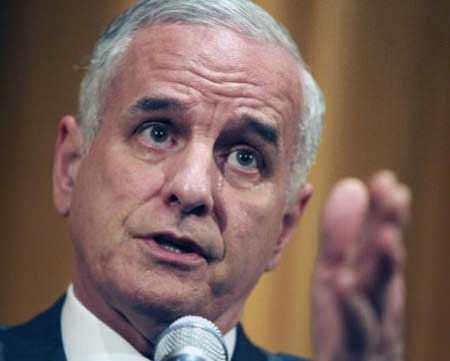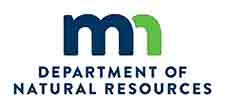

Minnesota –-(Ammoland.com)- Minnesota’s world-class natural resources and outdoor recreation opportunities would be maintained and improved under a budget being proposed by Gov. Mark Dayton, according to the Department of Natural Resources.
Minnesota has great fishing, access to millions of acres of public hunting lands and a growing deer herd, and a state park and trail system currently experiencing annual double-digit growth in popularity. Minnesotans enjoy 75 state park and recreational areas; 23,800 miles of snowmobile, cross-country skiing and all-terrain vehicle trails; and nearly 2,000 public water access sites and fishing piers across the state.
Minnesotans also count on abundant clean lakes, rivers and groundwater and healthy forests for a good quality of life and to support tourism and industry.
However, these quality of life amenities are threatened in the near future with inadequate funding. The DNR funds many of these activities through licenses and user fees – many of which are facing deficits in the next few years.
Without raising these user fees – some of which have not been increased for more than a decade – Minnesotans and visitors will see deteriorating parks and trail facilities and reduced visitor assistance. There will be declining fishing opportunity and quality, less habitat management on wildlife areas and other public lands and waters, fewer hunting opportunities, and fewer conservation officers to protect resources from poaching and misuse.
The governor’s budget also seeks to make key investments from the state’s General Fund to replant forests, conduct studies to help protect water resources, and upgrade the DNR’s technology.
“Minnesotans have come to expect top-shelf parks, trails, fishing and hunting experiences, clean water and healthy forests. These are an essential part of our outdoors culture and key to our state’s economic future,” said DNR Commissioner Tom Landwehr.
Landwehr said the governor’s proposed DNR budget seeks to restore funding to programs that are slipping toward deficits, maintain other programs at current levels and make strategic investments for the future.
Only about 15 percent of the DNR’s budget comes from the state’s general fund, but it is a critical part of the agency’s budget, Landwehr said. The vast majority of state DNR funding (85 percent) comes from user fees, sales of licenses and permits, and dedicated funds from the Legacy amendment and the state lottery.
Here are key elements of Dayton’s DNR budget proposal:
Game and Fish Fund
The DNR’s main fund for fish, wildlife and their protection, the Game and Fish Fund, relies primarily on sales of hunting and fishing licenses. This fund is critical to delivering the research, management and law enforcement necessary to maintain and improve healthy fish and wildlife populations and the quality habitats they depend upon.
The Game and Fish Fund is expected to slip into a deficit starting in 2019. To maintain the fund’s basic level of services, the governor’s budget proposes adjustments to fishing and deer-hunting license fees. Under this plan, a resident annual angling license would be adjusted by $3 (from $22 to $25), while a nonresident annual angling license would be adjusted by $6 (from $45 to $51). A resident deer hunting license would increase from $30 to $34; a nonresident deer hunting license would increase from $165 to $185.
A healthy Game and Fish Fund will allow the DNR to continue stocking of Minnesota’s state fish through a cost-effective walleye stocking program; make improvements to more wildlife management areas, allow Minnesotans easy access to quality hunting opportunities; ensure we keep deer herds healthy and the Minnesota “deer camp” tradition strong; and implement the new statewide northern pike rules.
Parks and Trails
Minnesota’s state parks and trails are treasured places. They are highly valued by more than 10 million visitors each year. And, while the DNR is meeting its goal of getting more Minnesotans outdoors, the state’s parks and trails have been stretched to a critical point where basic maintenance and staff services are no longer meeting visitor expectations. For example, due to failing infrastructure, Blue Mounds State Park no longer has safe drinking water for campers.
State park permit fees have not been raised since 2003, while visits, as evidenced by permit sales, have increased by about 30 percent in just the last three years. The governor’s budget proposal would adjust daily park permit fees by $1 (from $5 to $6) per day. Annual permits would increase by $5 per year (from $25 to $30). The fee increase as well as $9.3 million in new General Fund money will be used to support parks and trails operations in order to meet the needs and expectations of a wide variety of outdoor recreationists.
Outdoors protection and safety
The governor’s budget proposal includes $5.5 million from the General Fund to assist in filling 21 empty conservation officer stations across the state. Each conservation officer’s patrol area averages 650 square miles, which means there are 13,650 square miles in the state that don’t have adequate natural resource protection. That is an area larger than the states of Massachusetts and Rhode Island combined.
Recreational and trail accounts
Snowmobiling, skiing and boating are among the most popular outdoor recreation activities in Minnesota. State funds that help maintain more than 21,000 miles of snowmobile and all-terrain grant-in-aid trails are projected to go into deficits starting in fiscal year 2018. The water recreation account, which supports boat access and safety programs and other water-related efforts, is also projected to go into a deficit in fiscal year 2018. Minnesota’s cross-country ski fund, which maintains more than 700 miles of ski trails, currently is unable to cover trail grooming at DNR facilities across the state.
With account deficits, state trails and water recreation services and facilities, as well as local grant-in-aid programs, will be reduced. To make sure Minnesota’s recreational trails are properly maintained for current users and future generations, the governor’s budget proposes the following adjustments: to raise the three year registration fees for snowmobiles by $10 per year (from $75 to $105) and ATVs by $5 per year (from $45 to $60); three year boat registration fees would increase in a range from $2 to $60, depending on the length of the watercraft. For example, fees for a 17-19 foot watercraft would increase by $18. The state’s daily ski pass would rise by $2 (from $5 to $7).
Forests and clean water
The governor’s proposed budget includes $2.5 million from the General Fund to reforest state lands. This investment will help support the state’s important forest-products industry and includes $500,000 to complete a study of sustainable timber harvest on state lands.
The governor’s budget also proposes to adjust the annual watercraft surcharge fee from $5 to $12 to fight aquatic invasive species and support research for long-term control methods. (The surcharge was last increased from $2 to $5 in 1993.) The governor’s proposal includes $18.5 million from the Clean Water Fund for the DNR’s work to fix and prevent water pollution and prevent overuse of groundwater. With this funding, the DNR monitors and manages water use and provides local government and other state agencies with the information, analytical tools, and expertise needed to focus their water quality efforts most effectively.
Technology
The governor’s proposal includes $4 million to replace the agency’s aging forestry data system. This will help improve the quality and timeliness of forest management decisions. This initiative is part of the governor’s proposed $51 million in IT improvements to build a modern digital infrastructure that will ensure state government works at the speed of business. Additionally, the governor’s budget would invest $2.1 million from the General Fund to upgrade and modernize the DNR’s website so customers have greater access to recreation information and mobile-friendly applications.
“The DNR strives to protect and manage the public’s precious natural resources, while ensuring that fees are kept at a very affordable level,” Landwehr said. “We think the governor’s budget proposal does a good job of balancing the needs to maintain and improve the system with the desire to keep outdoor recreation affordable. The quality of life in Minnesota is phenomenal because of these opportunities,” he said, “and we need to ensure that we work hard to keep it that way.”
For additional information, visit mndnr.gov/aboutdnr/legislativeinfo.
